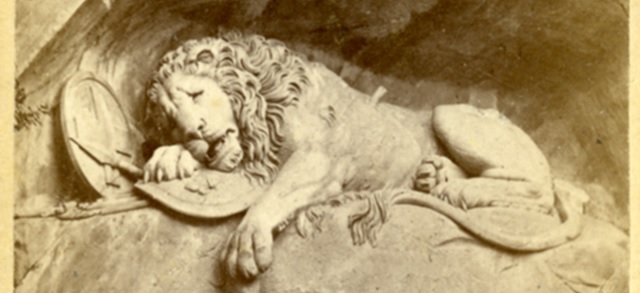
Monuments Class Projects
Architect/Sculptor of Monument
Giambologna (architect) and Pietro Tacca (architect)
Preview

Identifier
01a
Medium
photograph, carte-de-viste
Keywords
Equestrian Statue of Henri IV, Paris, France, 1818, Pont Neuf, kings, history -- Europe -- Western, cartes-de-visite (card photographs), equestrian statues, Henri IV, Baroque sculptures, France, French Revolution, French Restoration of 1815
Physical Dimensions
100 mm by 60 mm
Date of Publication
c. 1874
Name of Monument
Henri IV Statue
Date of Creation of Monument
1614
Date of Completion or Dedication of Monument
1818
City of Monument
Paris
Location within City
Pont Neuf bridge
State/Province of Monument
Ile-de-France
Country of Monument
France
Description
A carte-de-visite historical photograph of the Equestrian Statue of Henri IV. The Baroque statue was set up in honor of the French monarch Henry IV. In 1614, and then taken down during the French Revolution in 1792. It was replaced in 1818.
School of Art/Architecture
Baroque Sculpture
Publisher
Maison Frene
Digital Date
1-19-2022
Copyright
Physical copy of the carte-de-viste is in the public domain. Digital copy scanned by Rod Library ©2022 Rod Library, University or Northern Iowa.
Creative Commons License

This work is licensed under a Creative Commons Attribution-NonCommercial 4.0 International License
File Format
image/jpeg



Comments
Background
This monument is to King Henri IV of France (1589 – 1610), who stopped the persecution of French Protestants, for this he has been referred to as Henry the Good. A former Huguenot, he converted to Catholicism for his political career, as it was the only way that the French court would accept him as their king. He issued an edict of religious tolerance, known as the Edict of Nantes, to prevent future occurrences of the St Bartholomew’s Day Massacre, when many French Protestants were slaughtered. He was later assassinated.
The original statue was constructed in 1614 by Giambologna (1529 – 1608) and Pietro Tacca (1577 – 1640). The original was surrounded by 4 statues of symbolic slaves who appear, from paintings of the monument, as having their chains being broken.[1] The statue of Henri IV was torn down during the French Revolution in 1792, but the statues of the slaves were left intact, and were taken to the Louvre. The statue was later recreated in 1818, to honor the restoration of the monarchy under Louis XVIII and to bolster support for the king, although he seemed unenthusiastic about the restoration of the monument in his address at its unveiling. The restored statue was meant to convince people that the monarchy were there to support them, and that they were a legitimate form of government. The original was placed there because of his popularity among the French people. This allowed it to survive for slightly longer during the Revolution because of people’s positive attitudes towards Henri IV.[2]
It is a baroque statue, which are designed to viewed from a multitude of different perspectives, with there being captured intense emotions, and highlighting contrasts, with this monument the contrasts hold the regal nature of Henri IV and the fact that the engraving on the pedestal is a depiction of the St. Bartholomew’s Day Massacre. This effect is especially prominent if one viewed the original, which was surrounded by symbolic slaves that Henri had liberated from their bonds. The style constructed art and architecture in ways that captivated their audiences and by evoking emotions. The monument was placed on the Pont Neuf, because of the ornate location being a place to rejoice for his dedication towards his subjects and taking care of them, as well as being within sight of his various improvements for the city.[3] Its location is one of prominence in the city of Paris, as the Cathedral at Notre-Dame is nearby, unlike most other monuments to other monarchs on account of the work that Henri IV did for France.[4]
Bibliography
Celle, Stéphanie, and Carlo Usai. "Restauration De La Statue De Henri IV." In Situ, no. 14, OpenEdition, Dec. 2010. Crossref, https://doi.org/10.4000/insitu.6989.
Rosen, Mark. “Pietro Tacca’s ‘Quattro Mori’ and the Conditions of Slavery in Early Seicento Tuscany.” The Art Bulletin 97, no. 1 (2015): 34–57.
Thompson, Victoria E. “The Creation, Destruction and Recreation of Henri IV: Seeing Popular Sovereignty in the Statue of a King.” History and Memory 24, no. 2 (2012): 5–40.
Van Der Linden, David. “Memorializing the Wars of Religion in Early Seventeenth-Century French Picture Galleries: Protestants and Catholics Painting the Contested Past.” Renaissance Quarterly 70, no. 1 (2017): 132–78.
[1] Mark Rosen. “Pietro Tacca’s ‘Quattro Mori’ and the Conditions of Slavery in Early Seicento Tuscany.” The Art Bulletin 97, no. 1 (2015): 34–57.
[2] Victoria E Thompson. “The Creation, Destruction and Recreation of Henri IV: Seeing Popular Sovereignty in the Statue of a King.” History and Memory 24, no. 2 (2012): 5–40.
[3] Thompson. “The Creation, Destruction and Recreation of Henri IV.” History and Memory 24, no. 2 (2012): 5–40.
[4] David Van Der Linden. “Memorializing the Wars of Religion in Early Seventeenth-Century French Picture Galleries: Protestants and Catholics Painting the Contested Past.” Renaissance Quarterly 70, no. 1 (2017): 132–78.
-----------
On the back of the card the words "Henry IV Sur le pont neuf" are written; which means "Henry IV on the Pont Neuf." Printed on the back is "Album Pour Photographies stereoscopes monocles portraits cartes Maison Frene 222 Rue de Rivoli 222 Paris." Handwritten on the back are the words "Collected in 1874 by American on tour." The translation from French is albums for photographs stereoscopes monocles portraits cards."